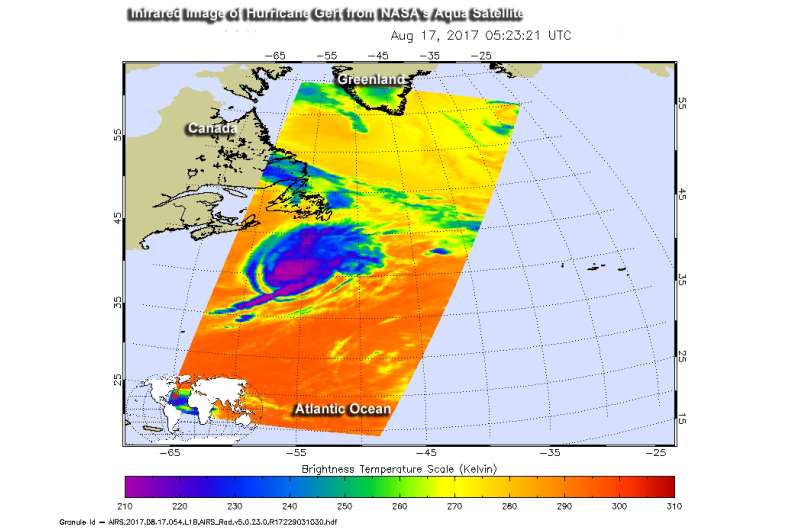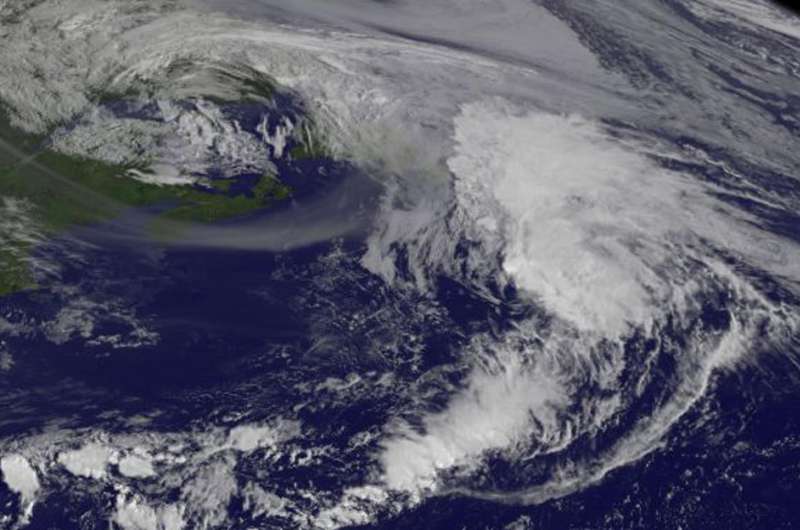Satellites show Hurricane Gert being affected by wind shear

NASA's Aqua satellite and NOAA's GOES-East satellite provided an infrared and visible look at Atlantic Hurricane Gert. Both images showed the storm was being affected by wind shear and had become elongated.
The Atmospheric Infrared Sounder or AIRS instrument that flies aboard NASA's Aqua satellite analyzed Gert in infrared light on Aug. 17 at 8:45 a.m. EDT (1145 UTC). AIRS data showed Gert coldest cloud top temperatures exceeded minus 63 degrees Fahrenheit (minus 53 degrees Celsius) and were being pushed northeast of the center. Storms with temperatures that cold are high in the troposphere and NASA research has shown they have the ability to generate heavy rain.
On Aug. 17 at 8:45 a.m. EDT (1145 UTC) NOAA's GOES-East satellite provided a visible image of Gert. The National Hurricane Center said that the convective structure of Gert had rapidly deteriorated during the morning hours due to very cold sea surface temperatures and increasing strong vertical wind shear. The GOES-East image showed that Gert still had some strong thunderstorm development in the northeast quadrant, but it appeared elongated from south-southwest to north-northeast.
At 11 a.m. EDT (1500 UTC), the center of Hurricane Gert was located near 43.2 degrees north latitude and 50.0 degrees west longitude. It is centered about 685 miles (1,100 km) east of Halifax, Nova Scotia, Canada, and about 285 miles (460 km) south-southeast of Cape Race, Newfoundland.
Gert is moving toward the east-northeast near 40 mph (65 kph), and this general motion is expected to continue for the next day or so. Maximum sustained winds have decreased to near 80 mph (130 kph) with higher gusts. Additional weakening is forecast during the next 48 hours. Gert is forecast to become a post-tropical cyclone later today.

Provided by NASA's Goddard Space Flight Center




















